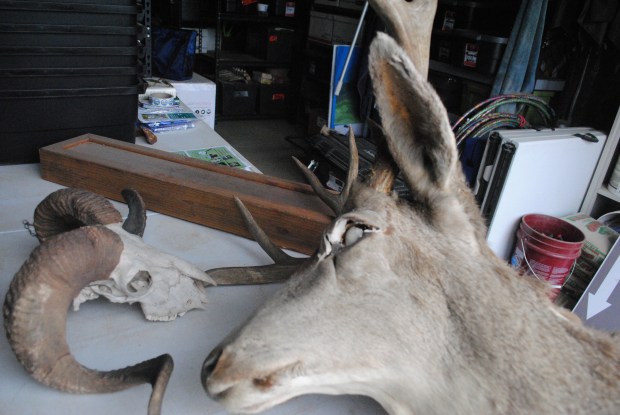Michele Van Hare enjoys teaching about the environment and nature. And she thinks those who attend outside sessions know when she tells in addition to can reveal.
The educator with the town of Loveland is seeking contributions of skulls, antlers, mounts or elements of animals to assist with her travel the cottage in addition to education programs in Viestenz-Smith Mountain Park which will available as an education centre.
She guessed that moving into hunting now is the time.
“It creates more of a true relationship,” explained Van Hare, holding a massive antler out of a six-point bull elk. “We’re fairly disconnected from character today… We strive to provide the entire picture. We want that link, and the relationship is more powerful when it is real.”
The town of Loveland’s outdoor education program does have any antlers, a few pieces of hide, a rattlesnake, a bullhead which has been mounted in 1932 that’s so old that the eye socket is broken, a gold eagle that has been mounted pre-Endangered Species Act, a buffalo head along with some different parts of wildlife Van Hare utilizes to help instruct. But most are quite old and a lot more is required since its own environmental and education offerings expand.
Van Hare hopes seekers will think about donating or will consider donating them to assist further education. The town has permits to take. Along with almost any specimens, the town would love to understand that item’s background, based on Van Hare.
Especially, Van Hare is looking for legally gathered donations of a complete mule deer head mount along with mounts, pelts, skulls or elements of wild turkey, coyote, mallards, Canada goose, mountain lion, black bear, birds, snakes and snake skins, Abert squirrel, long-tailed weasel and some other indigenous Colorado species.
The want list bighorn sheep hoof or conceal comes with skull, skull or skeleton, fish mounts jaw or a dog pelt and mounted and recognized Colorado butterflies and moths. The town dropped.
“Any North American species with a focus on Colorado wildlife will be greatly valued,” Van Hare wrote in an overview concerning contributions being hunted. “All things should be in a position to be kept in unheated and uncooled spaces, and have to be dried, either tanned or treated (mounts) not to rust or attract rodents”.
Plus some discoveries that may improve education will help Van Hare explained. A good illustration of a contribution she uses is a branch that was chewed revealing how they maintain their teeth in form.
“We are searching for strange things people discover that we are able to use to discuss behavior,” Van Hare added.
All specimens that were given have to be maintained and should have been collected.
An education lesson is relatable and real when people touch and are able to see, she explained.
“You may tell folks many occasions to not get too near an elk, but if you have them maintain an antler and feel its weight, they recognize these are amazingly powerful animals with severe weapons in their minds which can do severe harm — use a telephoto lens,” she wrote in advice about her schedule.
“Together with furs, we discuss camouflage and even conceal samples in tall leaves or grass or mountainous regions. We speak about adaptations for defense, climate, bringing a mate food gathering and ingestion.”
The specimens are utilized to compare to explain other lessons and behaviors. By way of instance, a sheep skull enables one to observe how horns and the bone are, helping to understand the men fight with each other by also the and head-butting energy behind them.
To learn more or to donate, contact Van Hare in 962-2643 or michele.vanhare@cityofloveland.org

